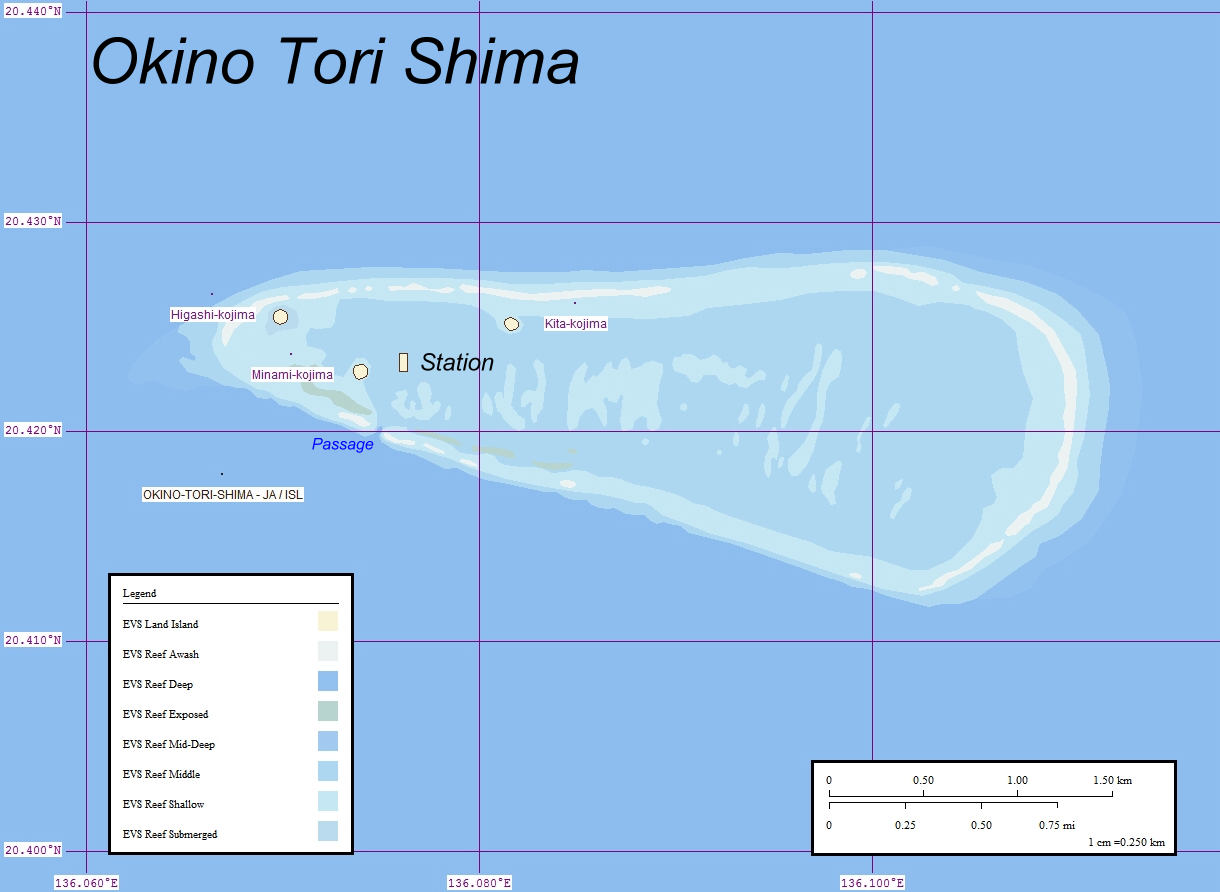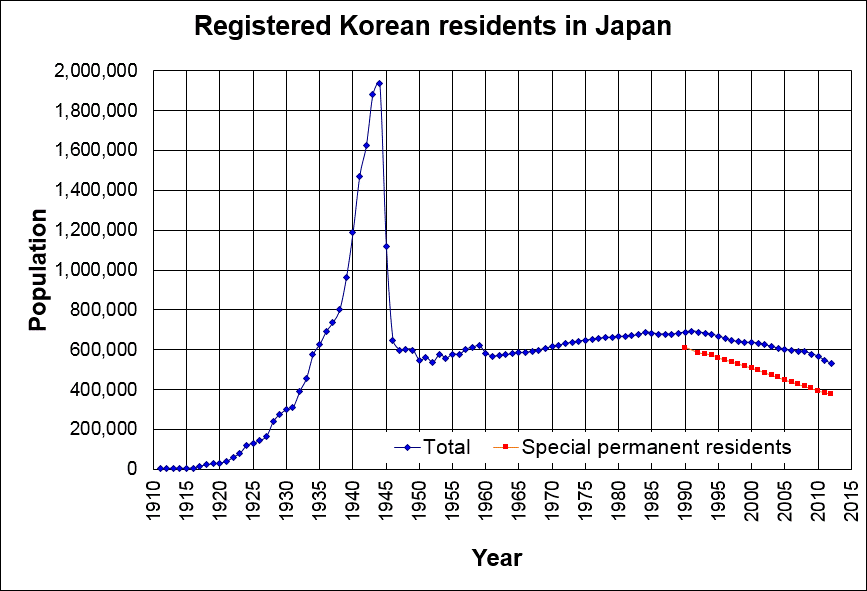|
Registered Domicile (Japan)
In Japan, a registered domicile (本籍, ''honseki'') is the place where a Japanese citizen is considered to have their roots. It determines the city/ward/town office where their koseki is kept. Features A registered domicile is not necessarily the same as a Japanese citizen's place of birth or current residence (despite the name). It is printed on a person's koseki and passport, and is listed (albeit on the prefecture level only) on the latter in lieu of someone's place of birth. A registered domicile can be any address within the boundaries of Japan which possesses an official postal address and postcode. This has led to people registering their domiciles at addresses such as the Tokyo Imperial Palace (~2000 registrations) and Okinotorishima (~200 registrations). There are exceptions to this rule: places which do not fall within a prefecture's boundaries, areas not belonging to a city/town/village, and the Kuril Islands. Naturalised Japanese (unless coming from a background ... [...More Info...] [...Related Items...] OR: [Wikipedia] [Google] [Baidu] |
Japanese Passport Information Page
Japanese may refer to: * Something from or related to Japan, an island country in East Asia * Japanese language, spoken mainly in Japan * Japanese people, the ethnic group that identifies with Japan through ancestry or culture ** Japanese diaspora, Japanese emigrants and their descendants around the world * Japanese citizens, nationals of Japan under Japanese nationality law ** Foreign-born Japanese, naturalized citizens of Japan * Japanese writing system, consisting of kanji and kana * Japanese cuisine, the food and food culture of Japan See also * List of Japanese people * * Japonica (other) * Japanese studies , sometimes known as Japanology in Europe, is a sub-field of area studies or East Asian studies involved in social sciences and humanities research on Japan. It incorporates fields such as the study of Japanese language, history, culture, litera ... {{disambiguation Language and nationality disambiguation pages ... [...More Info...] [...Related Items...] OR: [Wikipedia] [Google] [Baidu] |
Japan
Japan is an island country in East Asia. Located in the Pacific Ocean off the northeast coast of the Asia, Asian mainland, it is bordered on the west by the Sea of Japan and extends from the Sea of Okhotsk in the north to the East China Sea in the south. The Japanese archipelago consists of four major islands—Hokkaido, Honshu, Shikoku, and Kyushu—and List of islands of Japan, thousands of smaller islands, covering . Japan has a population of over 123 million as of 2025, making it the List of countries and dependencies by population, eleventh-most populous country. The capital of Japan and List of cities in Japan, its largest city is Tokyo; the Greater Tokyo Area is the List of largest cities, largest metropolitan area in the world, with more than 37 million inhabitants as of 2024. Japan is divided into 47 Prefectures of Japan, administrative prefectures and List of regions of Japan, eight traditional regions. About three-quarters of Geography of Japan, the countr ... [...More Info...] [...Related Items...] OR: [Wikipedia] [Google] [Baidu] |
Koseki
A or family register is a Japanese family register, family registry. Japanese law requires all Japanese households to make notifications of their vital records (such as births, adoptions, deaths, marriages and divorces) to their local Municipalities of Japan, municipal authority. Domestic aspects such as marriages, divorces, Paternity (law), acknowledgements of paternity of non-marital children, and adoptions, are only legitimized if they are recorded on the ''koseki''. Births and deaths become legally effective as they happen, but such events must be filed by family members or other persons as allowed by law. ''Koseki'' registration is required by all Japanese citizens, and possessing one is definitive proof of Japanese nationality law, Japanese nationality, unless a Renunciation of citizenship, renunciation application is made, which is subsequently recorded on the ''koseki'' for reference. Along with the ''koseki'' registration, Japanese citizens are individually required t ... [...More Info...] [...Related Items...] OR: [Wikipedia] [Google] [Baidu] |
Tokyo Imperial Palace
is the main residence of the Emperor of Japan. It is a large park-like area located in the Chiyoda, Chiyoda, Tokyo, Chiyoda district of the Chiyoda, Tokyo, Chiyoda ward of Tokyo and contains several buildings including the where the Emperor has his living quarters, the where various ceremonies and receptions take place, some residences of the Imperial House of Japan, Imperial Family, an archive, museums and administrative offices. The palace grounds and gardens are built on the site of the old Edo Castle. History Edo castle After the capitulation of the Tokugawa shogunate, shogunate and the Meiji Restoration, the inhabitants, including the Shōgun Tokugawa Yoshinobu, were required to vacate the premises of the Edo Castle. Leaving the Kyoto Imperial Palace on November 26, 1868, the Emperor arrived at the Edo Castle, made it to his new residence and renamed it to . At this time, Tōkyō had also been called Tōkei. He left for Kyōto again, and after coming back on May ... [...More Info...] [...Related Items...] OR: [Wikipedia] [Google] [Baidu] |
Okinotorishima
, or Parece Vela, is a coral reef, geologically an atoll, with two rocks enlarged with tetrapod-cement structures. It is administered by Japan with a total shoal area of and land area . Its dry land area is mostly made up by three concrete encasings and there is a stilt platform in the lagoon housing a research station. There is a third completely artificial tetrapod-cement islet. Okinotorishima is located on the Palau–Kyushu Ridge in the Philippine Sea, southeast of Okidaitōjima and west-southwest of South Iwo Jima in the Bonin Islands or south of Tokyo, Japan. Okinotorishima is the southernmost part of Japan and the only Japanese territory south of the Tropic of Cancer. Japan argues that Okinotorishima is significant enough for it to claim a exclusive economic zone (EEZ) around it, but China, South Korea, and Taiwan dispute the Japanese EEZ, saying that the atoll does not meet the definition of an island under the United Nations Convention on the Law of the Sea. ... [...More Info...] [...Related Items...] OR: [Wikipedia] [Google] [Baidu] |
Kuril Islands
The Kuril Islands or Kurile Islands are a volcanic archipelago administered as part of Sakhalin Oblast in the Russian Far East. The islands stretch approximately northeast from Hokkaido in Japan to Kamchatka Peninsula in Russia, separating the Sea of Okhotsk from the north Pacific Ocean. There are 56 islands and many minor islets. The Kuril Islands consist of the Greater Kuril Chain and, at the southwest end, the parallel Lesser Kuril Chain. The group termed the 'South Kurils' consists of those of the Lesser Kuril Chain together with Kunashir and Iturup in the Greater Kuril Chain. The Vries Strait between Iturup and Urup forms the Miyabe Line dividing the North and South Kurils. The Kuril Islands cover an area of around , with a population of roughly 20,000. The islands have been under Russian administration since their Invasion of the Kuril Islands, 1945 invasion by the Soviet Union near the end of World War II. Japan claims the four southernmost islands, including two of the ... [...More Info...] [...Related Items...] OR: [Wikipedia] [Google] [Baidu] |
Zainichi Korean
() are ethnic Koreans who immigrated to Japan before 1945 and are citizens or permanent residents of Japan, or who are descendants of those immigrants. They are a group distinct from South Korean nationals who have immigrated to Japan since the end of World War II and the division of Korea. They currently constitute the third largest ethnic minority group in Japan after Chinese people in Japan, Chinese immigrants. Their population declined significantly due to death, returning to Korea, and assimilating into the general Japanese population. The majority of Koreans in Japan are , often known simply as , who are ethnic Korean permanent residents of Japan. The term Zainichi Korean refers only to long-term Korean residents of Japan who trace their roots to Korea under Japanese rule, distinguishing them from the later wave of Korean migrants who came mostly in the 1980s, and from pre-modern immigrants dating back to antiquity who constituted the biggest ancestral group of the Japan ... [...More Info...] [...Related Items...] OR: [Wikipedia] [Google] [Baidu] |
Ancestral Home (Chinese)
In Chinese culture, an ancestral home is the place of origin of one's extended family. It may or may not be the place where one is born. For instance, Lien Chan was born in Xi'an, but his ancestral home is Zhangzhou. Definition A subjective concept, a person's ancestral home could be the birthplace of ''any'' of their patriline ancestors. Su Shi limited it to five generations, i.e. it refers to the home of one's great-great-grandfather. Even more broadly, an ancestral home can refer to the first locality where a surname came to be established or prominent. Commonly, a person usually defines their hometown as what their father considers to be his ancestral home. In practice, most people would define their ancestral homes as the birthplace of their patriline ancestors from the early 20th century, around the time when government authorities began to collect such information from individuals. Moreover, a person's ancestral home can be defined in any level of locality, from prov ... [...More Info...] [...Related Items...] OR: [Wikipedia] [Google] [Baidu] |
Place Of Origin
In Switzerland, the place of origin (, literally "home place" or "citizen place"; ; , literally "place of relevance") denotes where a Swiss citizen has their municipal citizenship, usually inherited from previous generations. It is not to be confused with the place of birth or place of residence, although two or all three of these locations may be identical depending on the person's circumstances. Citizens of Liechtenstein also have a Place of origin (Heimatort). Acquisition of municipal citizenship Swiss citizenship has three tiers. For a person applying to naturalise as a Swiss citizen, these tiers are as follows: *Municipal citizenship, granted by the place of residence after fulfilling several preconditions, such as sufficient knowledge of the local language, integration into local society, and a minimum number of years lived in said municipality. *Cantonal (state) citizenship, for which a Swiss municipal citizenship is required. This requires a certain number of years l ... [...More Info...] [...Related Items...] OR: [Wikipedia] [Google] [Baidu] |
Law Of Japan
The law of Japan refers to the legal system in Japan, which is primarily based on legal codes and statutes, with precedents also playing an important role. Japan has a civil law legal system with six legal codes, which were greatly influenced by Germany, to a lesser extent by France, and also adapted to Japanese circumstances. The Japanese Constitution enacted after World War II is the supreme law in Japan. An independent judiciary has the power to review laws and government acts for constitutionality. Historical developments Early Japan The early laws of Japan are believed to have been heavily influenced by Chinese law. Little is known about Japanese law prior to the seventh century, when the Ritsuryō was developed and codified. Before Chinese characters were adopted and adapted by the Japanese, the Japanese had no known writing system with which to record their history. Chinese characters were known to the Japanese in earl ... [...More Info...] [...Related Items...] OR: [Wikipedia] [Google] [Baidu] |







